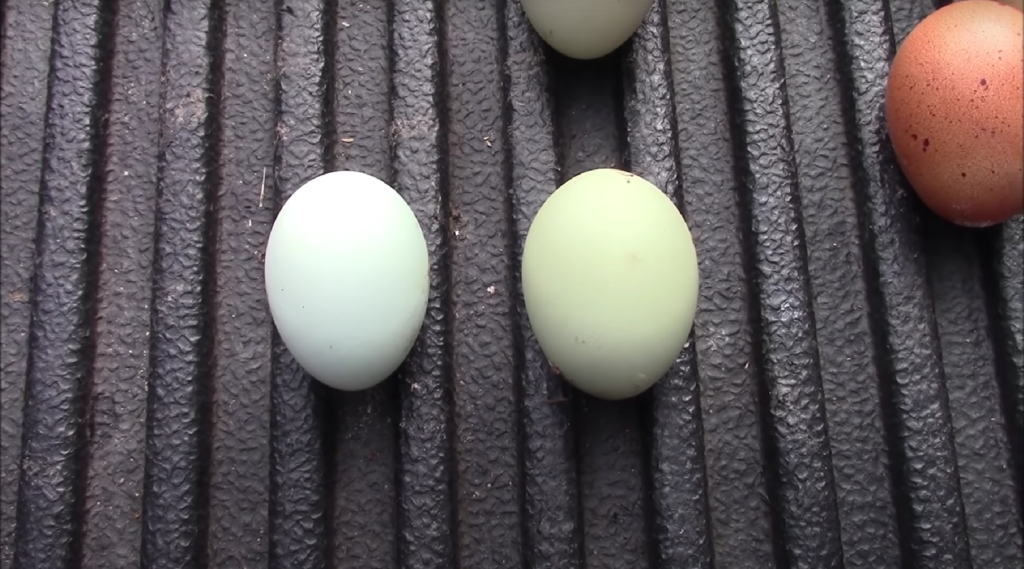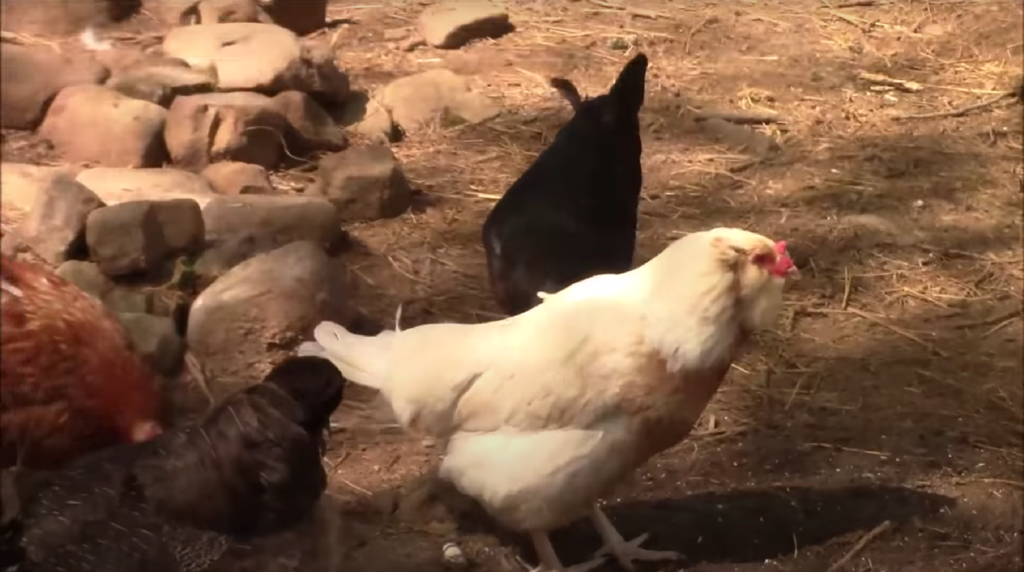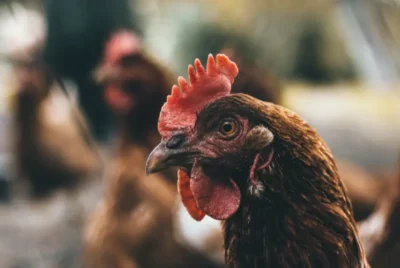Whiting True Blue Chickens: Egg Color, Breed Traits and More
Looking to unravel the mystery behind the remarkable blue eggs of Whiting True Blue chickens? Our guide cuts straight to the essentials, offering expert advice on raising these chickens, understanding their prolific blue egg production, and appreciating their striking appearance.
The Creation of the Whiting True Blue Breed
Unveiling the curtain on the Whiting True Blue chicken’s creation takes us back to the 1990s, with renowned poultry geneticist, Dr. Tom Whiting. Initially driven by a desire to create a breed with fly-tying feathers, his scientific curiosity evolved into crafting a chicken breed that was both aesthetically pleasing and productive.
Through careful crossbreeding of Araucana and Leghorn breeds, Dr. Whiting meticulously created the Whiting True Blue breed. His careful selection for specific traits accomplished two major goals: the brilliant blue egg color and high egg production.
This process guaranteed a consistent inheritance of the blue egg gene in the offspring, thereby piquing breeders’ interest.
Unique Characteristics of Whiting True Blues
A harmony of colors, the Whiting True Blues showcase a wide spectrum of feather hues, including common shades of red and blue. This vibrant display makes each chicken visually unique within a flock.
Their distinctive appearance is further emphasized by the lack of feathering on their legs, a trait that simplifies maintenance in muddy environments.
Blue Egg Production

Undoubtedly, the Whiting True Blue chicken’s ability to lay blue eggs stands out as their most distinctive trait. The blue egg color is not just a visual delight, it’s a testament to the power of poultry genetics. The unique blue coloration is due to a pigment called oocyanin, which is deposited during the egg’s shell formation.
Beyond the captivating color, these chickens are prolific layers. Whiting True Blues are known to produce up to 300 medium to large beautiful blue eggs annually, leaving people to wonder how many eggs they can expect from their flock. This attribute brings diversity and color to egg baskets, enhancing the value of any flock they join.
Size and Growth Rate
In terms of size, the Whiting True Blues are medium-sized birds, with hens weighing around 5 lbs and roosters up to 7 lbs. They mature for processing at approximately 20 weeks of age.
Despite their smaller size, their unique egg color and high annual egg yield compensate for this shortcoming.
Read also: An In-depth Look at the Rhode Island Blue Chicken Breed
Caring for Whiting True Blue Chickens

Their active nature and robust adaptability make caring for very active chickens, such as Whiting True Blue chickens, a captivating task. These true blue chickens value their freedom and need secure housing to protect against predators and ample roaming space to address their exploratory instincts.
Their high energy demands and strong appetites necessitate constant food and clean water access. Providing them with an environment that meets these needs ensures that your flock remains healthy and productive.
A standout feature of Whiting True Blue chickens is their adaptability. These birds can withstand a broad range of temperatures, tolerating both hot climates, withstanding up to 104F, and cold climates, enduring temperatures as low as -45F.
Housing Requirements
The active nature of Whiting True Blue chickens means they need sufficient space to partake in free-ranging activities such as scratching and walking around. Their dwelling should offer protection against predators and provide enough room for them to roam freely.
Maintaining a clean environment plays a crucial role in disease prevention. Regular cleaning of surfaces within the housing and maintaining a constant supply of fresh, clean water is essential to their well-being.
Feeding and Nutrition
To properly feed Whiting True Blue chickens, one must stick to a balanced diet suitable for their respective life stage. Young chicks should start on a protein-rich starter feed to support their growth until they are about 3.5 to 4 months old.
After this period, you can transition them to layer feed, crucial for their egg production.
Laying hens require additional nutrients and vitamins for consistent and healthy egg production, which can be provided in the form of layer feed. Calcium supplements, like oyster shells, ensure strong eggshells for both regular and hatching eggs.
Supplementing their diet with healthy snacks rich in vitamins and minerals also promotes optimal health.
Health and Disease Prevention
Although Whiting True Blue chickens are typically resilient, they aren’t immune to common poultry diseases like Salmonellosis, Infectious Coryza, and Avian Influenza. Contaminated surfaces including water and mold can facilitate the transmission of these diseases.
Keeping a close eye on the flock can help in early detection of symptoms like loss of appetite, diarrhea, or decreased egg production. Maintaining cleanliness in the coop and nests is essential to disease prevention and to attract hens to lay eggs.
Regular veterinary care and up-to-date vaccinations are crucial to prevent the spread of diseases.
Temperament and Social Behavior of Whiting True Blues

Despite their vibrant plumage, Whiting True Blue chickens exhibit a friendly and inquisitive nature. Their high energy levels often translate into independence and a strong proclivity for foraging, yet they still enjoy human attention, although they prefer not to be touched.
These birds integrate well into an established flock, adhering to the pecking order, and showing non-aggressive behavior. This makes it preferable to keep them with other gentle poultry breeds. However, their somewhat aloof nature might not be the best fit if you’re seeking a companion bird.
Meat Production Potential
Even though Whiting True Blues are primarily known for their blue eggs, they also hold potential for meat production. However, compared to breeds specifically cultivated for meat production, they are not fast-maturing.
As medium-sized birds, their meat yield is smaller than that of larger, meat-specific breeds. Nonetheless, what they lack in quantity, they counterbalance with quality. The taste of their meat is considered good, adding another feather to their cap.
Purchasing Whiting True Blue Chickens
Are you eager to introduce these blue egg-laying marvels to your backyard? The Whiting True Blue chicken is exclusively available at Murray McMurray Hatchery, the sole proprietor of the breed’s genetic lines and name.
Whether you’re buying from the hatchery or small breeders, look for signs of good health such as active behavior, clean eyes, and well-formed beaks and bodies.
Frequently Asked Questions
Are Whiting True Blue chickens good layers?
Yes, Whiting True Blues are excellent layers, producing large powder blue eggs and laying consistently throughout the year, even in extreme weather conditions. They start laying at around 5 months old and continue to lay 5-6 eggs a week, totaling around 280-300 eggs per year.
How many eggs does Whiting True Blue produce a year?
Whiting True Blues produce between 280-300 eggs per year, making them a good choice for egg production.
At what age do whiting true blues start laying eggs?
Whiting true blues start laying eggs at around 5 months of age. They are prolific in laying and prompt egg production.
How many eggs do whiting true green chickens lay?
Whiting True Green chickens lay 300-350 large green eggs per year, with the exact shade varying between individual hens. So, you can expect an average of around 300-350 green eggs annually from each hen.
Raise Your Whiting True Blue Chicken
The Whiting True Blue chicken truly stands out. This breed has grown in popularity since its creation by Dr. Whiting, thanks to its unique blue egg production, diverse feather colors, and adaptive nature. Their care involves providing secure housing, ensuring a balanced diet, and regular health monitoring.
While they may not be the best choice for companion birds or fast meat production, their egg-laying prowess, adaptability to varying climates, and non-aggressive nature make them a worthy addition to any flock.
Whether you’re a poultry enthusiast or a backyard farmer, the Whiting True Blue chicken offers a unique experience that’s both rewarding and fascinating.




